Create a model
From this section you can create a model:
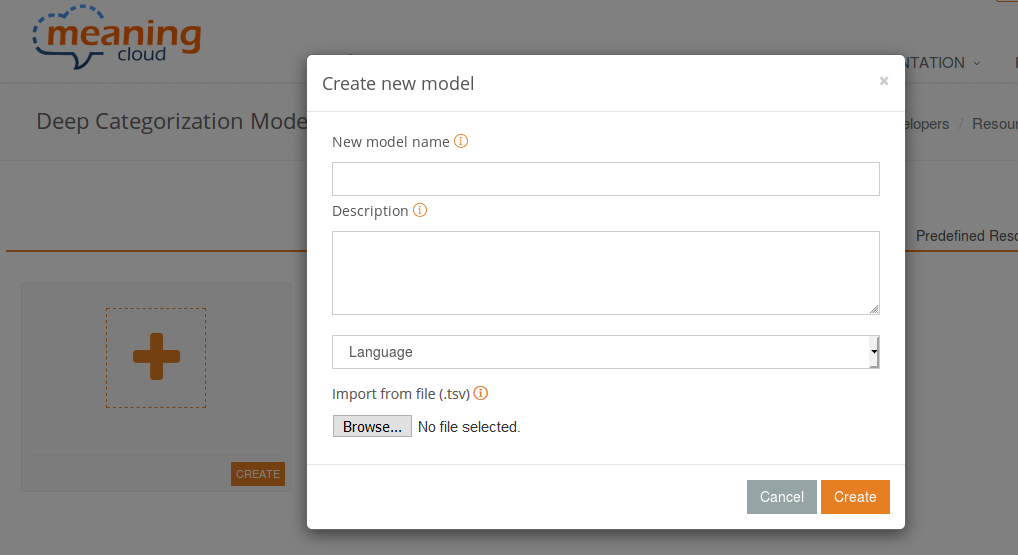
After selecting it, a window will appear with four fields:
- New model name: The name of the model, how you will identify it, both in the dashboard and when used to categorize texts. This field is limited to 64 characters: only dashes, underscores and alphanumeric characters are supported.
- Description: Free text to describe the model. It is limited to 255 characters.
- Language: Language of the model. The language chosen affects only the list of stopwords that will be associated with the model. There are six predefined languages: Spanish, English, French, Italian, Portuguese and Catalan.
- Import from file: This allows you to include a file containing categories in order to directly add them to the model you are creating. For more details see the import section.
Out of these four fields, only New model name and Language are mandatory to create a new model.
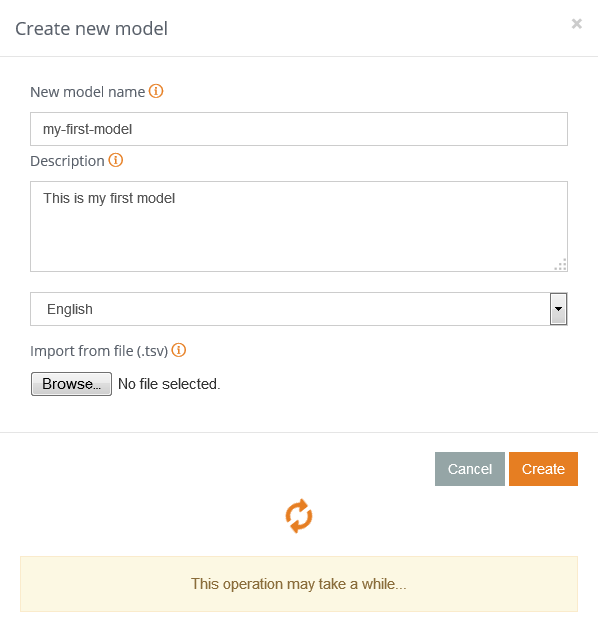
Once you have filled in all the fields you need to create a model, you just have to click on "Create".
If any of the fields contains incorrect values, the creation process will be aborted and you will be redirected to the dashboard, where one or more error messages will explain what was wrong with the input data.
For example, if you enter "my first model" in the field New model name, you will obtain the following:
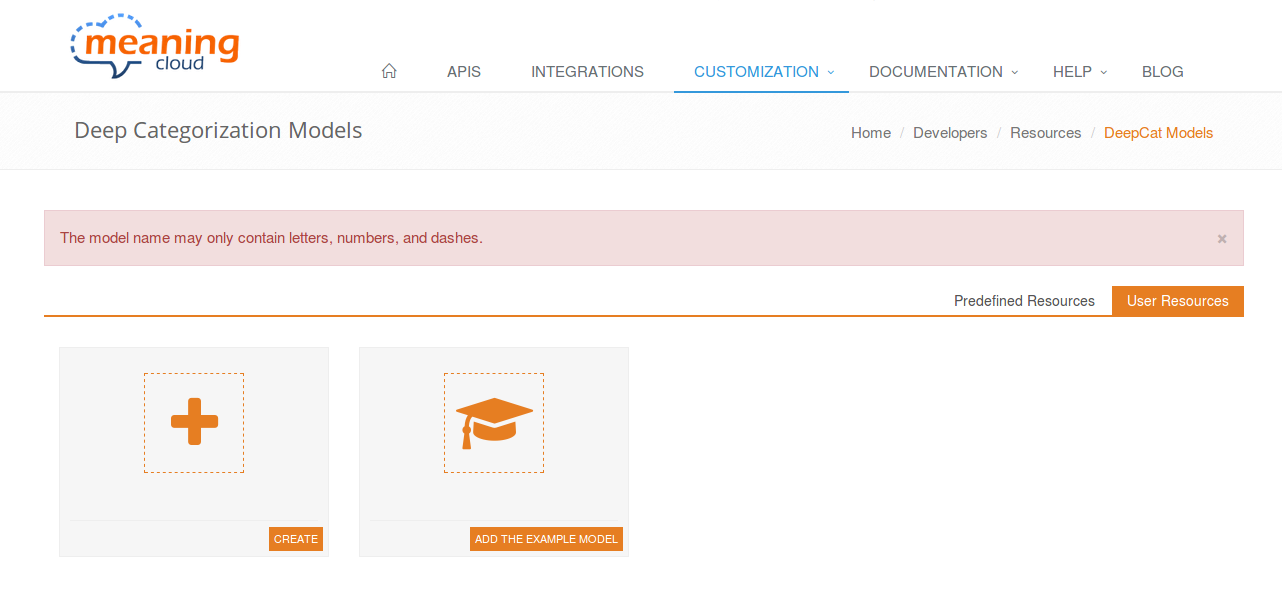
When the creation process has been successfully completed (this includes the creation of categories and other elements from an imported file), you will be redirected to the model view.
This is how the dashboard will look after creating a model:
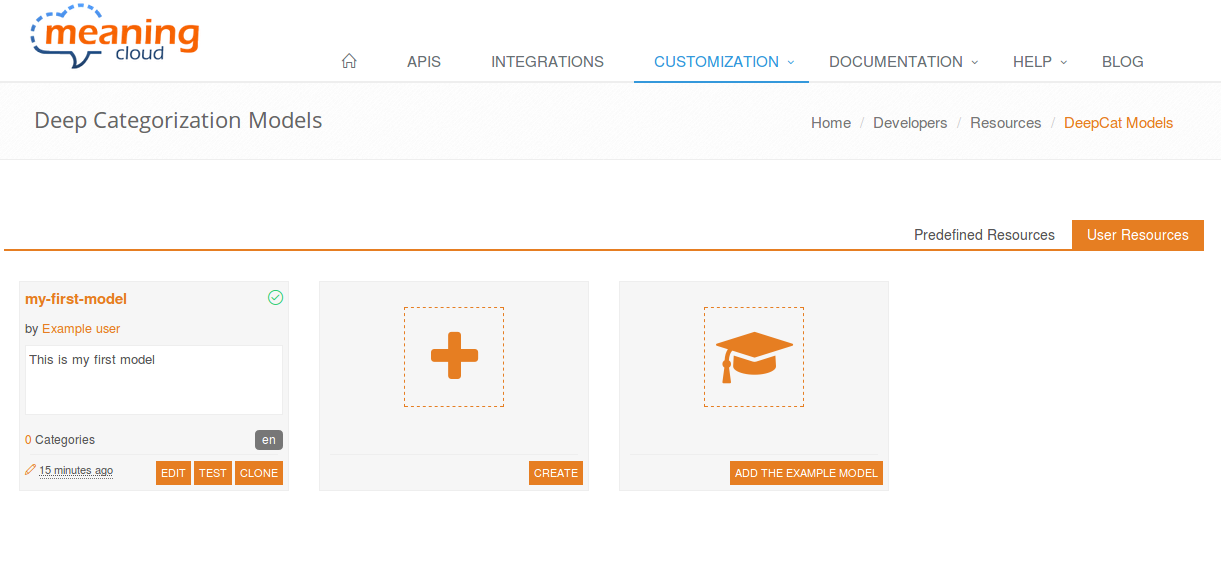
And the following features are displayed for each model created:
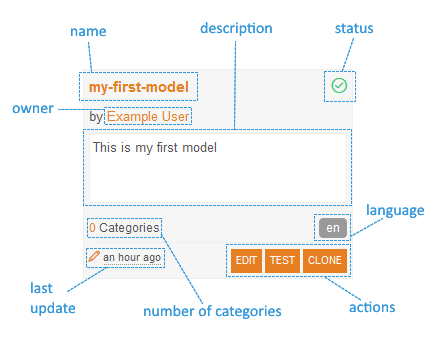
We have already talked about the name, description and language of a model, which leaves the following fields:
- Status: Indicates whether the last time the model was built the process ended successfully.
- Owner: Name of the user that created the model.
- Number of categories: Number of categories created in the model.
- Last update: How long ago the model was last updated.
- Actions: Direct links to useful actions: Model editing (also available by clicking the name), testing, and cloning.
Both the editing and the testing will be explained further in the model view section, as they can also be accessed from there. Nevertheless, the cloning operation can only be carried out from the models dashboard.
When you click on clone, you obtain the following dialog box:
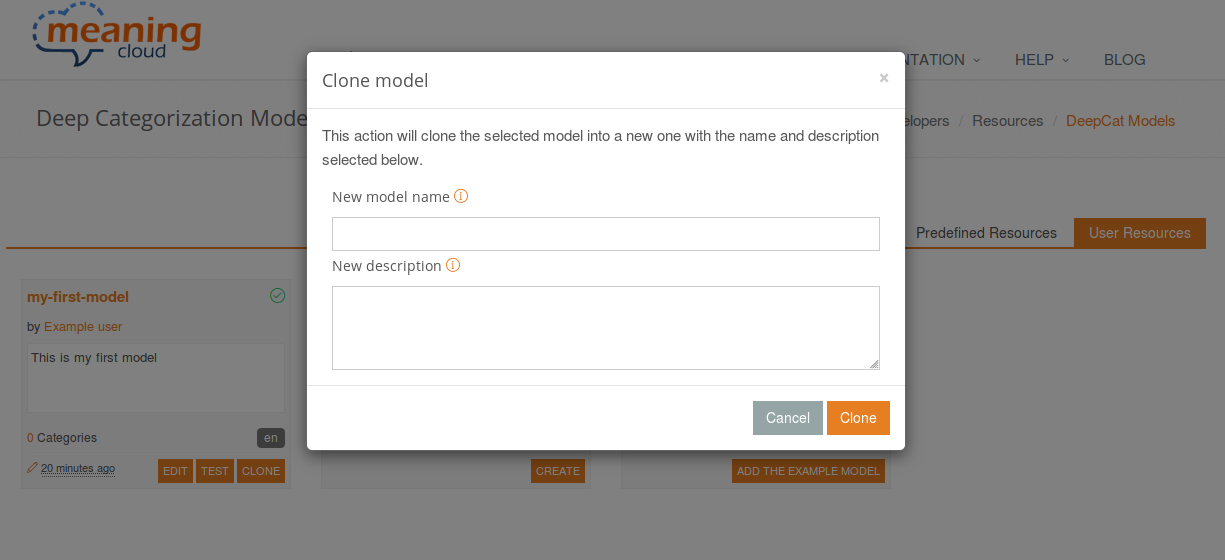
The cloning process makes an exact copy of the model you choose, including all its elements. The only things that differ will be the model name and description, both definable in the fields New model name and New description in the Clone model dialog.
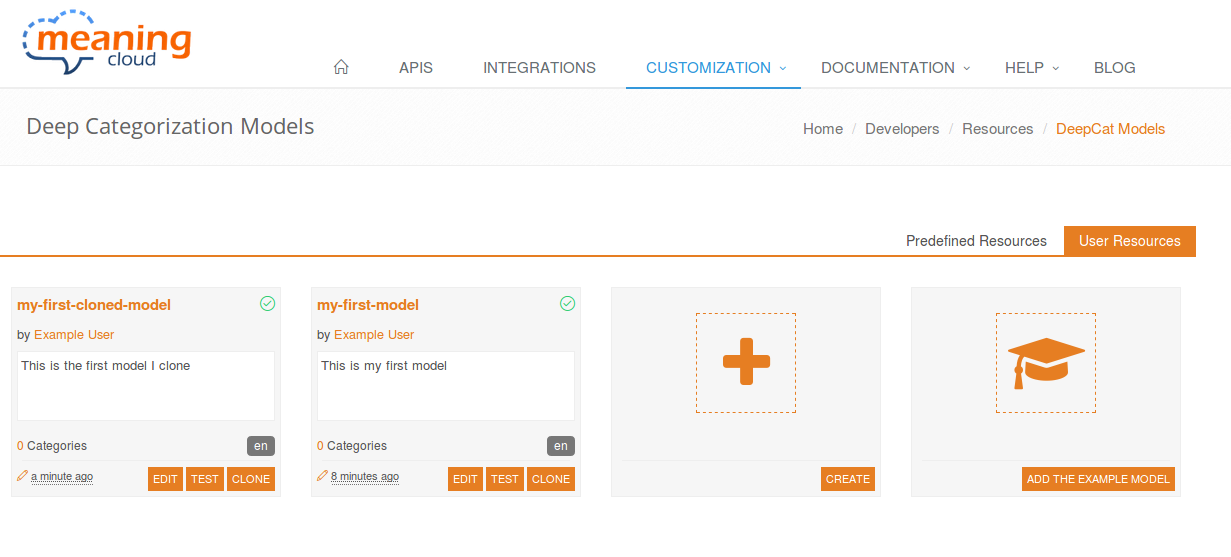
Did you notice...?
That the models are ordered using the most recent criterion? This way, you will always have the model you are currently working on at your fingertips.

